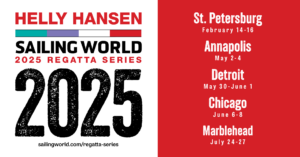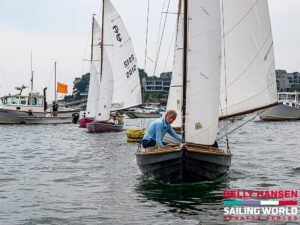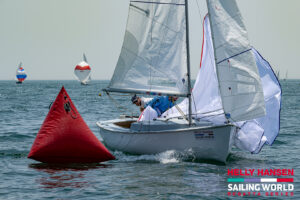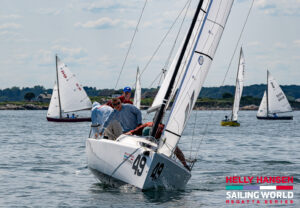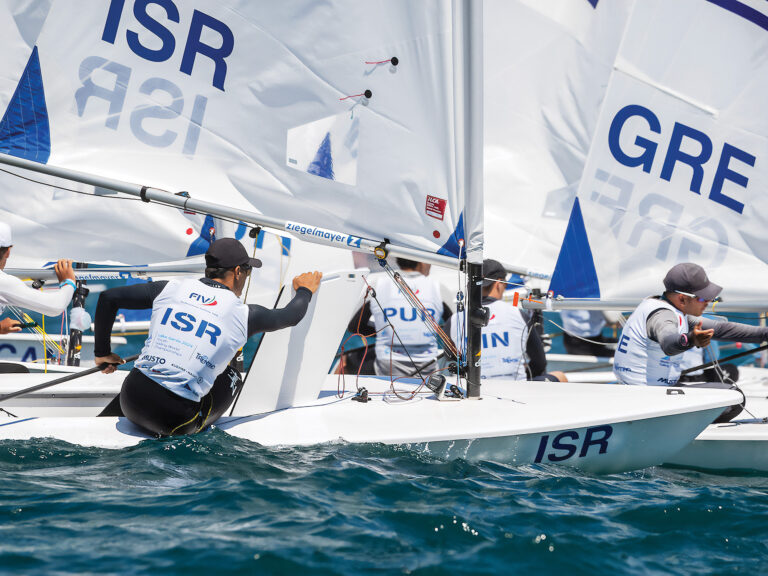Retro is always cool. Cars, motorcycles, bikes, you name it, there’s just something better about the 80s that we’re missing today. Thankfully, at the NOOD we’ve got the spliff-like Hobie 33s, a boat that’ll whip its crew into submission when sailing upwind in waves and chop, but have them begging for more when this skinny old-school sportboat gets blazing down the run.
Built during the 1980s, this lightweight flyer from the eponymous surfboard and catamaran company out in California was ahead of its time with a lifting keel and deck-stepped mast that allows it to be towed around the country without a pile of roadway permits in the glovebox.
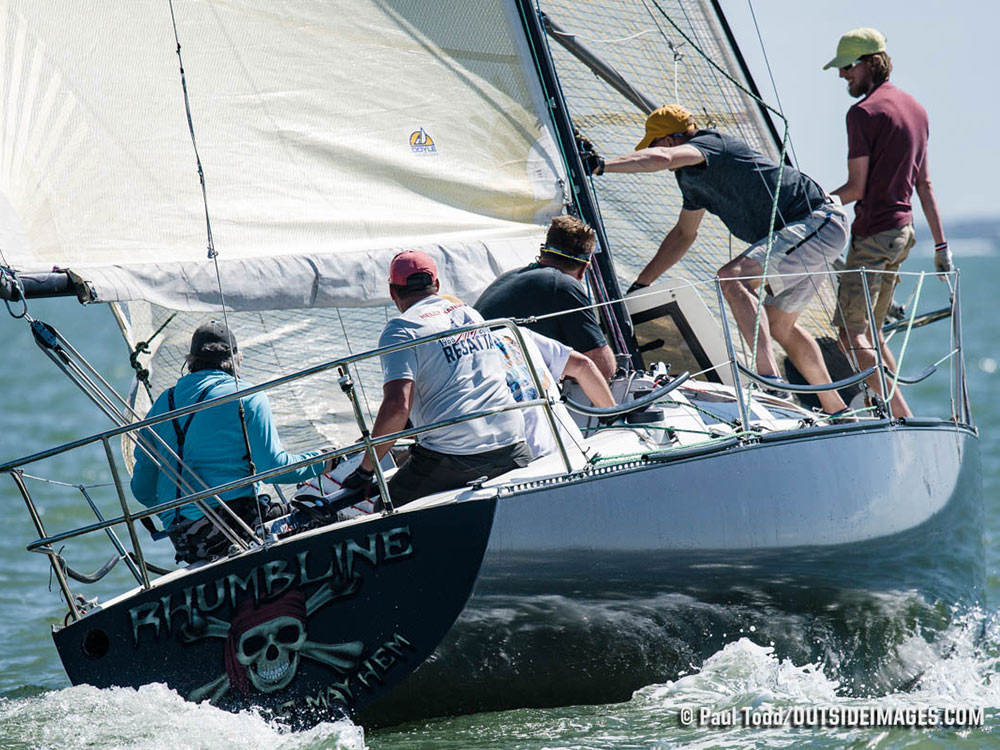
“It was the closest thing I could find to a windsurfer that I could afford,” says Scott Maust, skipper of Rhumbline, one of three Hobie 33s that traveled from afar to race the 30th Anniversary Helly Hansen NOOD Regatta in St. Petersburg, Florida. “When I sailed my first one I was hooked.”
Maust soon found one of the 147 or so thought to be built and refit the thing from the bottom up. He campaigns Rhumbline from Pigeon, Michigan, with a cadre of close friends, but to find one-design competition, he has to hit the road. “There is a good concentration of them on the West Coast, Lake Erie, and they’re scattered about Florida and East Coast,” he says. “A lot of them club race, but there is a dozen of us that travel consistently.”
In an adjacent slip at St. Petersburg YC is Steven Attard’s Hobie 33 Viva Las Vegas. He’s the guru of all things Hobie 33. Attard’s looks suspiciously newer than Rhumbline and that’s because it is: Attard’s Viva is one of a handful that have been recently built from the original molds (Viva in 2002).
“You might find one on Craigslist for $15,000 or so, depending on the sail inventory,” says Maust. “But there are hidden gems out there.”
Take, for example, his first Hobie 33, which he says was laying in the hills of Tennessee. His second (Rhumbline) had hardly ever been used when he got his hands on it, and his future boat, which was recently wrecked in a Noreaster in New Jersey, and is on its way to a second life.
“The boat was ahead of its time, for sure,” says Maust. “The Hobie 33 was built as a planing boat long before they were popular. They’re, narrow fast and fun, and on a reach, it’s a boat that’s hard to beat. Upwind, though, it doesn’t really point that well.”
Given its narrow beam and light weight, the boat is hypersensitive to crew weight and choreography, says Maust, and there’s really only room for three people in the cockpit at any one time. The foredeck has a narrow surface, which is tricky for the bowman, but on Rhumbline, the spinnaker goes up and down through the hatch without much stress — most of the time.
Regardless, there’s not a lot that stresses Maust. For him, the cliché rings true: every day on Rhumbline is a Hobie Day, but the best of them are “those long-distance races when the wind is right and you’re planing at 15 knots.”

